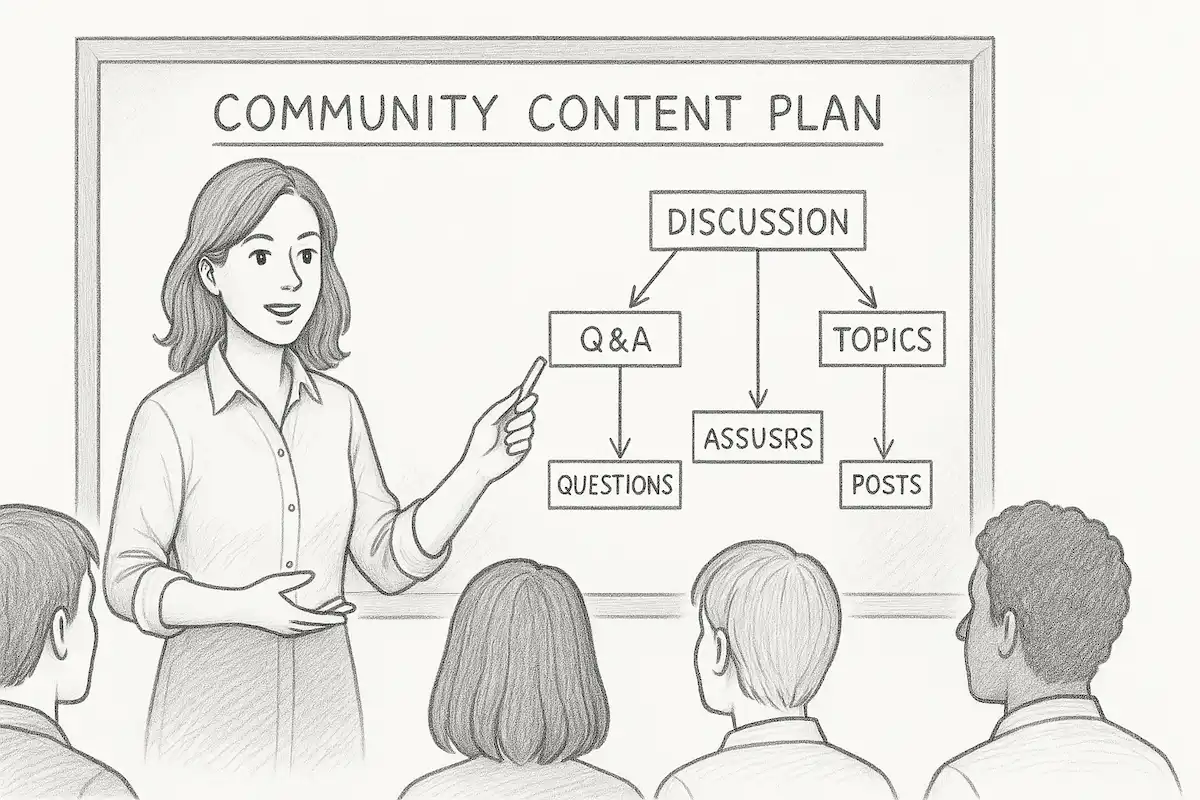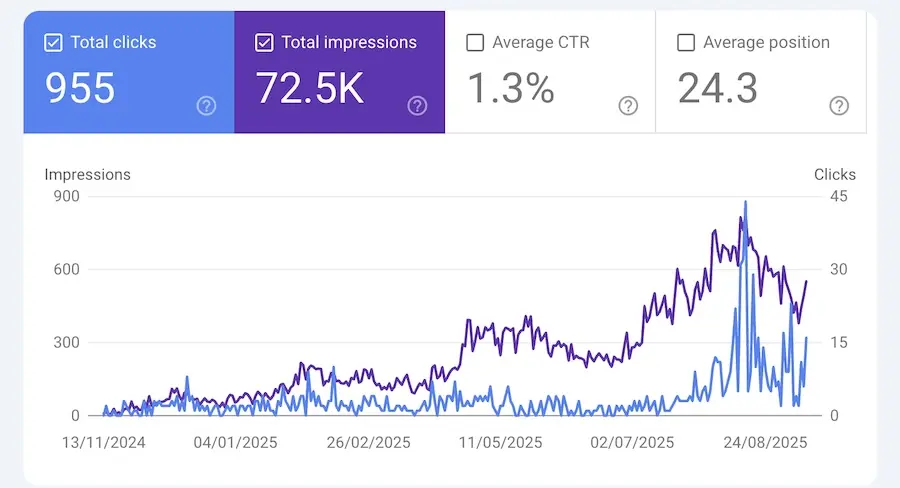Community Seed Content Strategy: Proven Ways to Get Better Rankings, Traffic, and Organic Growth

I am an advocate of building public communities. User-generated content (UGC) is a goldmine of organic traffic. Opening your community’s content to search engines, LLMs and visitors is equivalent to opening the floodgates of organic traffic. It boosts your brand visibility, awareness and can drive potential customers to your marketing funnel.
But - all of this works only when your content is optimised for SEO or GEO (Generative Engine Optimization).
In this article, I’ll share simple SEO hacks to skyrocket your community’s organic traffic. These techniques are more effective if your community is new and needs a content strategy. If you implement it - your community will start attracting traffic.
…and that’s a promise!
tl;dr: Community Content Strategy
In the initial days of community building, you’ll be responsible for creating content. Focus on content that immediately solves a pain point for your target user. Create it in the form of QnA or Discussions to target long-tail keywords and in-depth Articles and interlink these strategically to build topical authority.
Let’s dive into the details.
Basics of Community SEO: The 80 - 20 Content Rule
When building a public community and optimise content for SEO, you will need to balance the content format:
80% content in QnA / Discussions format (ToFu content)
20% content in in-depth Article format (MoFu content)
This content distribution will always help you build topical authority (more on this, soon) quickly and get attention from search engines and LLMs quickly.
Recommended Reading: Community SEO
QnA / Discussions: Target Long-Tail Keywords
I can’t stress the importance of long-tail keywords. Most content creators tend to go after queries that are popular.
The problem with this approach is that you are competing with the big boys of the Internet who have spent years crafting their content, improving the domain rating, SEO score and backlink profile.
It’s like trying to compete with Usain Bolt in a 100m sprint. Your chances of winning are ZERO.
So, what’s the way out?
Shift your focus to keywords that your competitors aren’t focusing. Target the super-specific queries that only a handful of people in the world are searching.
Let me explain with an example. If your community is about Yoga Practitioners, you’d be tempted to write content on “Top 20 Benefits of Yoga in 2025”.
The problem? 20 year old sites have already written on that topic. They have all the ticks in E-E-A-T section.
But, what if you create content on a very specific topic that your competition has ignored?
For example:
“Can I practice Tadasana in the morning right after waking up if I have lower back stiffness?”
“How should I modify Tadasana if I’m 38, slightly overweight, and recovering from a slipped disc?”
“Is Tadasana safe for someone with flat feet who also has mild scoliosis?”
Now think from search engine’s perspective. Their job is to show the best content on the Internet that solves user-queries.
Maybe only 20 people in the whole world are searching for these or similar queries. If your community has content that goes supper-niche; your chances of appearing in searches automatically skyrocket.
Note: Don’t be under illusion that writing 10 such questions and offering answers will start giving you traffic. It takes months before you can earn trust from search engines.
Sources to find Niche Questions and Discussions for your Community
There are several places you can look for the questions people are already asking. Following are some of my favorite sources:
Reddit, Quora, Stack Overflow, Facebook Groups
Google Search Suggestions and “People Also Asked”
Google Trends
Ahrefs / Semrush : Questions
Your competitors communities / forums etc.
Scout these resources and make a list of all the questions people are already asking. Then add your own variations. Aim to make a list of about 200 - 500 questions, if you can.
Now hold that thought for a while; because we need to explore “Articles”. We’ll then bring everything together.
Articles: Showcase Your Expertise
Your community needs long-form articles to engage people and showcase your expertise. You’ll need these to go deeper into each topic and prove to search engines that you mean business.
Keep in mind that you will NOT cover generic keywords in your articles. In fact, you should ignore competitive keywords at least for the first 6 months to 1 year of building your community content.
Focus on MoFu (middle of the funnel) topics for your articles. Pick the titles that present an opportunity to showcase your own, real-world take on the topics in your niche.
Consider following article titles for our Yoga community:
Practicing Tadasana Daily: Changes in Posture I Observed After 90 Days
How Yoga Helped Me Manage Stress as First-Time Manager
Important: Look for backlinking opportunities from relevant QnAs in your community. An article should link to about 2-3 relevant QnAs / Discussions in your community and attract internal links from 3-5 QnA / Discussions.
Internal linking is often ignored by most SEOs. Experience shows internal links work better than XML sitemaps.
Internal Linking Between QnA and Articles
[QnA 1]
\
[QnA 2] ---->
/ \
[QnA 5] ----> [ARTICLE] ----> [QnA A]
\ \
[QnA 3] ----> ----> [QnA B]
/
[QnA 4]Building Topical Authority
With your QnA and Article structure in plan, we’re naturally setting up our community for topical authority.
In the first 3-4 months, you will focus on creating QnA and Articles relevant to your niche. I repeat - target nano-niche, long-tail queries. This is important to set our community up for future growth.
Avoid the trap of running after top, highly competitive queries. It will lead to wastage time and other resources; and you will not get desired results.
When you link your QnAs and Articles strategically, you make it easy for search engine and LLM algorithms to:
Understand site’s structure
Easily figure out your niche expertise
Build trust in your domain
Improve your brand’s visibility
Refer your site to newer queries
Time Required to Rank in Search Engines and LLMs
In general, there are about 200 different parameters that determine how your content ranks. Search engine algorithms and LLMs will reward the pages and sites that establish authority in a certain topic / niche.
We’ve observed that it usually takes about 4-6 months for a fresh domain to start showing up in search results. If you are publishing high-quality, original content frequently - you will be rewarded with traffic and authority in that time-frame.
Keep in mind that we have not talked about backlinks. You may try to get backlinks from authority domains in your niche and get ranking faster.
Should You Use AI Content?
I strongly advise against using 100% AI copy-paste. I’m yet to see a site that continues to rank with 100% AI content.
Of course, you can have AI create original content; but that requires very advanced prompt engineering; and content tweaking.
My advice would be:
Use AI to suggest content structure
Use your own insights, views or examples to enrich AI content
All the efforts in building authentic, original content would be rewarded.
Real-World Case Study
Here’s a Jatra powered community that put this plan into action. It’s been slow to create content, but you can see the growth compounding over time.

Final Thoughts
Seeding your community with content that attracts users is hard. You’ll be working alone with no success in sight for weeks. That’s one of the main reasons why most communities fail in the first 6 - 12 months.
The content plan I’ve shared above works. It’s worked for at least 3 communities I’ve helped build recently.
If you need help with your community content, I’m happy to help. Share your questions through comments below. I wish you all the best!